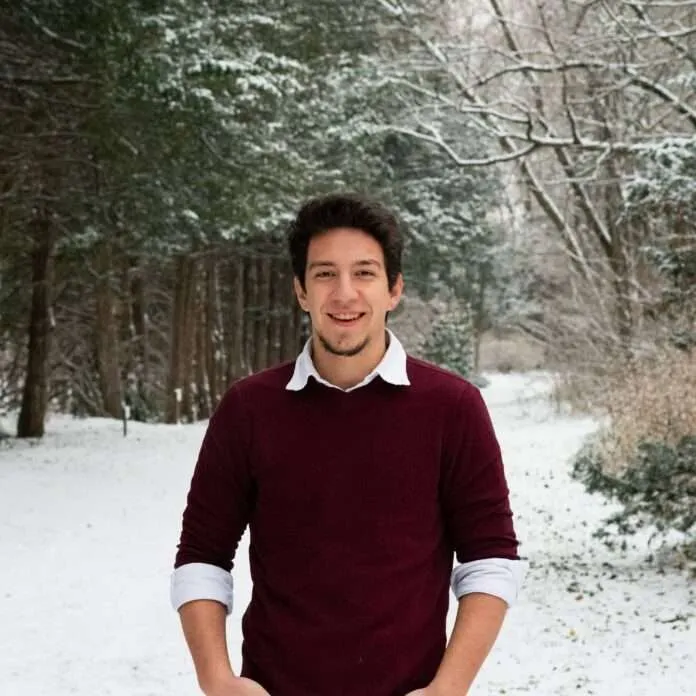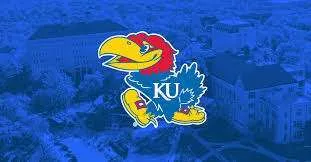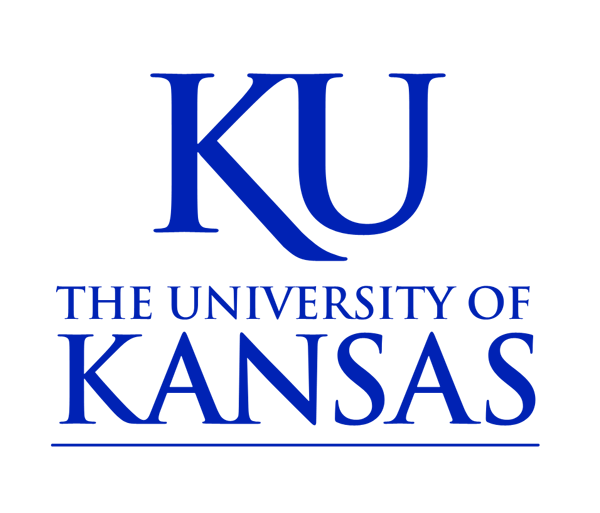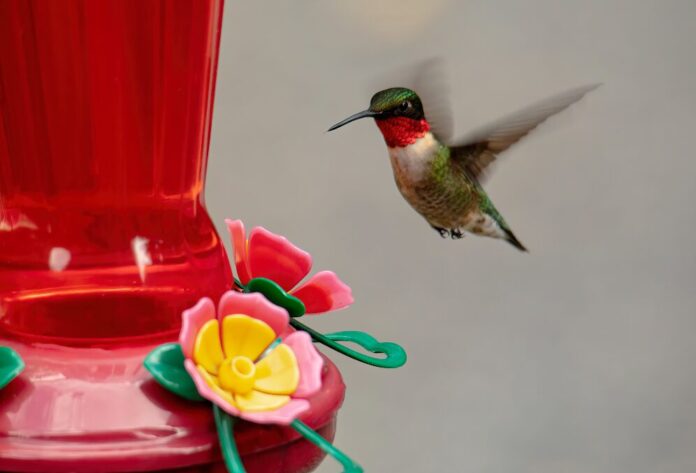From the Office of Public Affairs | http://www.news.ku.edu
Headlines
Hybrid research symposium planned for Undergraduate Research Week
LAWRENCE — The Center for Undergraduate Research at the University of Kansas will host online and in-person research presentations to celebrate Undergraduate Research Week. The 2024 Online Undergraduate Research Symposium will include 149 Jayhawk projects live on the symposium website April 15-19. In-person presentations will take place April 16-17, including by students from Fairway, Lenexa and Olathe.
KU students excel in math competitions
LAWRENCE — University of Kansas students have tested their mathematical prowess at local, state and national events, including first- and third-place team wins at the Kansas Collegiate Math Competition. Students participating in recent events include Kansans from Kechi, Lawrence, Manhattan, Overland Park, Shawnee and Topeka.
Journalism professor explores how helping students embrace data can be new approach to writing instruction
LAWRENCE — Each semester, University of Kansas journalism faculty member Christopher Etheridge hears students ask how much math will be involved in a class or suggest that they are not good with numbers. In a chapter for the new book “Better Practices: Exploring the Teaching of Writing in Online and Hybrid Spaces,” he shares how reflective learning, or helping students realize that data can be used to tell a story that is true to their own experiences, can be a new approach to writing instruction.
KU Professional Selling Program/King’s Hawaiian Sales Competition sees record growth
LAWRENCE – A record 52 students from 13 teams across the U.S. competed in the fourth annual KU Professional Selling Program/King’s Hawaiian Sales Competition on April 5–6 at Capitol Federal Hall. Winners of the individual selling competition included University of Kansas student Audrey McBride (fourth place). McBride is from Kansas City, Missouri.
Full stories below.
————————————————————————
Contact: Erin Wolfram, Academic Success, 785-864-2308, [email protected]
Hybrid research symposium planned for Undergraduate Research Week
LAWRENCE — The Center for Undergraduate Research is hosting online and in-person research presentations to celebrate Undergraduate Research Week. The 27th annual Undergraduate Research Symposium provides students a venue to share the results of their research and creative projects and the KU community the opportunity to learn from their discoveries.
There are 149 presentations registered for the 2024 Online Undergraduate Research Symposium. Student presentations (in PDF format) will be live on the symposium website April 15-19.
This will be supplemented with three students presenting (A)ccessible, (C)reative and (E)ngaging (ACE) Talks from 3:30 to 5 p.m. April 16 in the Alderson Auditorium of the Kansas Union.
An additional ACE speaker, Kaitlyn Sy, a senior majoring in biotechnology, and her research mentor, Jack Treml, will present their research on the assessment of the effects of lactic acid on T cell viability and T cell receptor signaling in vitro at 3:30 p.m. April 17 in the English Room of the Kansas Union.
“We are continually impressed with the exciting research and creative projects KU undergraduate students are completing. The impact of these projects often spans far beyond KU’s campus. I hope the KU community will visit the symposium website and attend the in-person events this year to celebrate the amazing students, mentors and their inspiring work,” said Erin Wolfram, associate director of the Center for Undergraduate Research and Office of Fellowships.
The Undergraduate Research Symposium began in 1998 with the vision of Professor Emeritus K. Barbara Schowen, who wanted to provide an opportunity for students to share the results of their research and creative projects and hone their communication skills. Over the past 25 years, the campus has seen an increase in the number of students, faculty and staff participating in and supporting this annual event.
ACE Talks
The ACE Talks are the keynote presentations for the online symposium. Students applied to give an ACE Talk by submitting an abstract of their work and a short video of themselves talking about their project. Selected ACE Talk presenters each receive $500 and have a video of their presentation posted on the homepage of the 2024 Symposium website. The 2024 ACE Talk winners:
Kaitlyn Sy, a biotechnology major from Olathe, “Hiding in Plain Sight: Is Lactate an Invisibility Cloak for Cancer?” mentored by Jack Treml and Randall Logan, School of Professional Studies.
Logan Edmondson, a behavioral neuroscience major from Fairway, “Effects of End Times Messaging on Temporal Horizons,” mentored by Mark Landau, psychology.
Duong (Diana) Nguyen, a psychology major from Ho Chi Minh City, Vietnam, “Identity-Relevant Perceptions of Immigration among Asian Americans,” mentored by Glenn Adams and Syed Muhammad Omar, psychology.
Alyson Honeyman, a biochemistry major from Lenexa, “Subcloning and Mutagenesis of Shigella Virulence Proteins Involved in Antimicrobial Resistance,” mentored by Roberto De Guzman, molecular biosciences.
-30-
————————————————————————
The official university account for X (formerly Twitter) is @UnivOfKansas.
Follow @KUnews for KU News Service stories, discoveries and experts.
————————————————————————
Editors: Some students won awards in multiple competitions, with first and last names retained throughout the release for clarity.
Contact: Gloria Prothe, Department of Mathematics, [email protected]
KU students excel in math competitions
LAWRENCE — University of Kansas students recently tested their mathematical prowess at local, state and national events.
KU Math Prize Competition
The 41st annual event, sponsored by the Department of Mathematics, took place in March. Open to all KU undergraduates, the written exam for each level covered six questions to be completed in three hours. Cash awards were presented to the top three winners at both levels.
The junior level was open to all undergraduates of non-senior standing and assumes a knowledge of first-year calculus. The winners of the junior level:
First place: Lauren D’Souza, a junior in mathematics and computer science from Overland Park.
Second place: Ceres Botkin, a junior in mathematics and economics from Shawnee.
Third place: Braden Troyer, a junior mathematics and French & Italian from Manhattan.
Top first-year student: Kodai Nakae, a freshman in electrical engineering and economics from Singapore.
The senior-level is open to all undergraduates and covers a range of standard topics of undergraduate math. The winner of the senior-level:
First place: Teerapat Saengsubin, a senior in mathematics from Samut Prakan, Thailand.
Second place: Matthew Hunt, a senior in mathematics from Kechi.
Third place: Kashif Khan, a senior in mathematics and chemical engineering from Topeka.
Hailong Dao, professor of mathematics, was in charge of the competition.
Kansas Collegiate Math Competition
KU undergraduate students took first and third place in the team competition at the 2024 Kansas Collegiate Math Competition, which was March 23 at Washburn University. The competition is part of the yearly meeting of the Kansas section of the Mathematical Association of America.
The competition is team-based, with students working together in groups of two or three to complete 10 problems in three hours. Teams from undergraduate institutions in Kansas took part. Cash awards were given to the top teams.
Members of KU’s first-place team were Teerapat Saengsubin; Ansuman Sharma, a sophomore in computer science from Visakhapatnam, India; and Shad Ahmed Shahul Hameed, a senior in mathematics and computer science from Kasaragod, India.
Second-place team members were Matthew Hunt; Maral Bat, a sophomore in mathematics and computer science from Ulaanbaatar, Mongolia; and Matvey Tabakh, a junior in accounting from Overland Park.
Reuven Hodges and Yuanqi Wang, professors of mathematics, coached the team and assisted with the competition.
William Lowell Putnam Mathematical Competition
KU students participated along with over 4,000 other undergraduate students in the Mathematical Association of America’s William Lowell Putnam Mathematical Competition. Called one of the toughest math competitions in the world, the Putnam exam is a mathematics competition open to all regularly enrolled undergraduates in colleges and universities in the U.S. and Canada. The competition took place in December.
KU has several students who scored very well on the six-hour exam consisting of 12 problems. KU’s top three highest-scoring individuals made up the team, which was the highest-scoring team representing the state of Kansas.
KU’s students who scored well on the exam are Liam McKinney (ranked 348), a senior in mathematics and computer science from Lawrence. Teerapat Saengsubin (ranked 580), Ceres Botkin, Matthew Hunt, Shad Ahmed Shahul Hameed and Matvey Tabakh.
Joonha Park and Hodges, professors of mathematics, conducted training sessions for the Putnam exam.
-30-
————————————————————————
Subscribe to KU Today, the campus newsletter,
for additional news about the University of Kansas.
http://www.news.ku.edu
————————————————————————
Contact: Mike Krings, KU News Service, 785-864-8860, [email protected], @MikeKrings
Journalism professor explores how helping students embrace data can be new approach to teaching writing
LAWRENCE — A University of Kansas professor who teaches data storytelling has written new work about how embracing the idea that data is all around can be a new approach to teaching writing.
Each semester, Christopher Etheridge, assistant professor of journalism & mass communications, hears students ask how much math will be involved in a class or suggest that they are not good with numbers. In a chapter for the new book “Better Practices: Exploring the Teaching of Writing in Online and Hybrid Spaces,” he shares how reflective learning, or helping students realize that data can be used to tell a story that is true to their own experiences, can be a new approach to writing instruction.
The chapter “Reflective Learning in Data Storytelling” shares the experiences of Etheridge and co-author Heidi Skurat Harris of the University of Arkansas at Little Rock. They key is helping students realize data is not a set of arcane numbers hidden in official databases but rather information that informs everyday life, such as tax information, sports statistics, traffic rates and business figures.
“We can do data literacy for journalists, strategic communicators, marketers and others, but it wouldn’t make as much sense or be as efficient as teaching it to all manner of writers,” Etheridge said. “Heidi and I said, ‘We want students to realize that data is around them all the time.’ A big part of the work is getting the data, but the tools to do that, you already have.”
Etheridge and Skurat Harris share their example of reflective learning in teaching writing. In their class, the authors have instructed students to pair up and reflect on an experience in their lives they feel is worth writing about. The students share their ideas with the larger class, who ask questions and offer ideas on the type of data needed to properly tell the story.
One student shared that they were nearly hit by a car while walking through an intersection. That led to questions about accident rates at various intersections, severity of accidents, numbers of tickets written in certain areas, most dangerous times of day and how such data could be found and put to use in writing about the experience.
Throughout the chapter, the authors share how they guided students to take ownership of their own stories. They also share examples of how such a reflective experience could be used in other classroom settings along with strategies adjusting approaches for different class sizes or majors.
“Better Practices,” edited by Amy Cicchino of Embry-Riddle Aeronautical University and Troy Hicks of Central Michigan University, contains 19 chapters written by authors on topics such as collaborative writing, teaching in online/hybrid courses, textual analysis, writing for social media, open-media assignments and building trust in online writing. Published by WAC Clearinghouse, each of the book’s chapters are written by an early-career writing instructor paired with a more veteran educator.
“Amy (Cicchino) and Troy (Hicks) came up with the idea that we don’t have to be the best at everything, but we can be better at what we do and how we teach writing for the book,” Etheridge said of the editors. “Originally it was looking at online teaching, but there are so many ways we are teaching these days that we decided to explore some of the ways we can get where we want to be with small adjustments to our delivery and content.”
For their chapter, Etheridge and Skurat Harris share research supporting the practice of reflective learning and steps for how writing teachers can implement it in their own classrooms or teaching modules. The key in reflective learning with data is helping students realize that data is not an intimidating set of numbers, but a useful way of telling a story and helping people understand the experiences of life, the authors wrote.
“Some of the best ideas I’ve ever had as a communicator have come from regular life and seeing how people have presented an idea through a billboard or ad campaign,” Etheridge said. “We want to help students realize they can do the same.”
Etheridge said the chapter was inspired by the idea of providing students with the skills employers say they are looking for in early-career writers. As part of previously published work, Etheridge and colleague Peter Bobkowski wrote how editors, producers, hiring managers and others told them they want students with “spreadsheet wherewithal,” or the ability to handle and interpret data for readers and audiences.
“They tell us, ‘We don’t need everybody to know how to code,’ but they do want more of their staff to be able open Excel, put in numbers and be able to get some good results and make sense of the information,” Etheridge said.
-30-
————————————————————————
Don’t miss new episodes of “When Experts Attack!,”
a KU News Service podcast hosted by Kansas Public Radio.
https://kansaspublicradio.org/podcast/when-experts-attack
————————————————————————
Contact: Ashleigh Lee, School of Business, [email protected], @KUbschool
KU Professional Selling Program/King’s Hawaiian Sales Competition sees record growth
LAWRENCE – A record 52 students from 13 teams across the U.S. competed in the fourth annual KU Professional Selling Program/King’s Hawaiian Sales Competition on April 5–6 at Capitol Federal Hall.
This year’s competition featured teams from the University of Kansas School of Business, as well as the University of Arizona, University of Central Missouri, Indiana State University, University of Iowa, University of Georgia, Marshall University, University of Minnesota, University of Missouri, University of Nebraska, University of North Dakota, Texas Tech University and University of Wyoming.
The event is sponsored and judged by King’s Hawaiian and included a two-minute, individual speed-selling competition and a three-round, tournament-style team case competition, which featured a business situation designed by the company. Winners received cash prizes and were recognized during an awards ceremony.
Winners of the team case competition
First place: University of Georgia ($4,000)
Second place: University of Central Missouri ($3,000)
Third place: University of Iowa ($2,000)
Winners of the individual speed-selling competition
First place: Josephine Trinen, University of Arizona ($600)
Second place: Vivian Menis, University of Iowa ($500)
Third place: Maya Rappe, University of Arizona ($400)
Fourth place: Audrey McBride, KU ($300). McBride is from Kansas City, Missouri.
Fifth place: Lauren Plesant, Texas Tech University ($200)
Sixth place (tie): Josh Schweizer, University of Nebraska; Natalie Thoennes, KU ($100). Thoennes is from Southlake, Texas.
“The talent at this year’s competition was first-rate and a testament to the growth of sales education,” said Kristen Helling, director of the KU School of Business Professional Selling Program. “I am thankful that so many sales coaches care deeply about teaching the craft and are willing to spend their time developing the next generation of sales professionals. It’s inspiring to see young professionals work hard to hone their skills.”
The event has grown since its inaugural event in 2021, which hosted eight teams virtually because of COVID-19 precautions. The event has since grown to include more than 10 teams during the past two years and has seen teams from nearby and faraway states.
“This year was truly fantastic,” said Patrick Meehan, president, Irresistible Food Sales and COO of Irresistible Food Group, the parent company of King’s Hawaiian. “The teams did an incredible job tackling our hardest case yet, and the University of Kansas provided a world-class venue and experience. The level of alignment between King’s Hawaiian and the KU School of Business makes this partnership so special. Both are completely committed with all their resources to create an irresistible experience for all participants every year. Getting to see, first hand, future sales leaders practice their craft with peers from all throughout the country is the most exciting part of every year.”
-30-
————————————————————————
KU News Service
1450 Jayhawk Blvd.
Lawrence KS 66045
Phone: 785-864-3256
Fax: 785-864-3339
[email protected]
http://www.news.ku.edu
Erinn Barcomb-Peterson, director of news and media relations, [email protected]
Today’s News is a free service from the Office of Public Affairs









